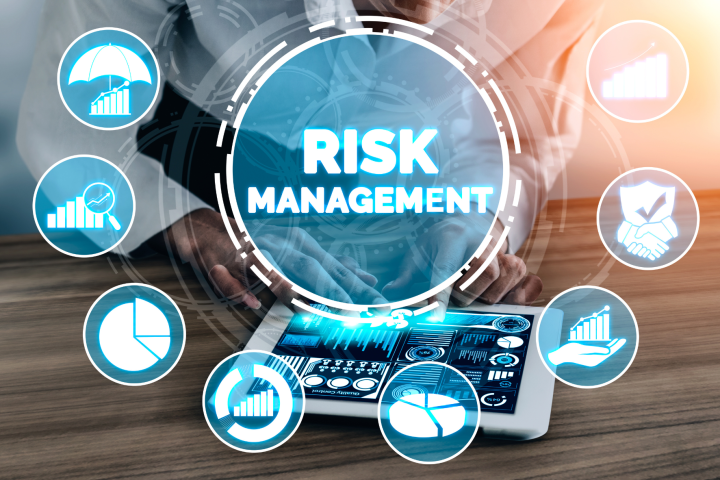Risk Management is the process of identifying, assessing and controlling financial, legal, strategic and security risks to an organization’s capital and earnings. These risks include fraud, quality, compliancy, cost, delivery and business continuity that can cover factors like pandemics and wars as we have seen pre-2023. To mitigate and address these risks we must ensure several factors are addressed such as better contracts to secure good pricing of goods and services as well as the delivery and quality of those goods. We can also choose our key vendors better, although sometimes a direct challenge when we buy a company and adopt legacy suppliers, but we can ask the right questions at the right time to ensure they are working with and not against our companies’ procedures and procurement objectives.
Just to highlight some of the more common challenges we can expect in 2023, this article has introduced, but not taken a direct challenge to these risks as any response would be complex and different for CPO’s within different sectors. The first of these is Inaccurate or no data, as often the basis of any commercial decision is based upon the access of good data, just as it should be more available to help with these decisions, we find it harder and harder in organizations with legacy systems that were not constructed to provide what we need now in 2023 and beyond. Indeed, the lack of transparency is a hinderance to all. Most often or not the data is there, we just can’t find or access it. A good CRM/ERP or Finance system can give us a start but how we manage and care for data is key to building a picture to support the procurement processes.
Of course, even the best of us is guilt of somethings and near if not top of the list is poor internal communication where one division does not know what the other is doing (or buying) either be it for working in silos (a common corporate problem), too remotely, too busy to or too competitively against ourselves as strange as that may sound. This starts at the top, if not the top, then for procurement with the CPO, to instill how the processes work and need to be adhered to. Years gone by, it may only have been that location A was buying pens cheaper then location B, but such is the complexity now that location B maybe paying for pens that are never received or worse being made by supplier that has not signed up to being as caring as they need to be to their own staff, we have to act responsibly, even with pens!
Supplier or vendor onboarding can be timely and challenging but offer great benefits to the organization. However, if not done correctly it can be a huge embarrassment that could directly affect inbound revenue due to negative publicity or non-provision of goods and services to the companies own customers. Both of which could affect the bottom line and force change of management in extreme situations. However, the positive side of having good suppliers or vendors is supremely beneficial as your success is their revenue, too often not enough work is put in at the start of the relationship, favoring harder stance as part of the negotiation process. Major issues in the supply chain be avoided with all four of the risks mentioned thus far! Good contract management with technology to support suppliers and vendors is key to a good working relationship that will directly support any CPO and their organizations procurement performance.
When the writer got into procurement in the 90’s, who would have thought over two decades later the willingness to change/not-change would still be an issue, in some ways though it is greater as culture has changed through our experiences of the past few years. Equality and hybrid working, have been added to the other business changes/challenges that were already occurring and a greater need to manage “more” is needed, the speed of change is lightning fast however technology can help if not answer many of those changes, mitigating the risks of the mundane so we can allow more time to concentrate on the more complex or larger changes.
If we are purchasing in 2023 as we purchased in 2018 and will be looking forward in 2028, then we are missing a huge risk to our business, inefficiency of processes as things change (ten years of change in two years of a pandemic!), we need to continually review and revise what we are doing now to ensure that is works for the business, our customers, our stakeholders and our staff with consideration for our suppliers and vendors. We are beyond the onset of procurement digitization both in B2C and B2B. We must use the proven solutions around us to ensure we avoid the risks that technology can aid us with. There certainly is no “out of the box solution” as any digital procurement application that does not meet expectations needs to be reviewed, corrected or replaced, often the cost of doing this is the role of the decision maker who implemented it if not done correctly, but most often the solutions we select can be corrected or added to. The inability to manage tail end spend is now accepted by CPO’s as the “20%(+)” of non-procurement system products or services, but this is not the case as the technology is out there to have them within a secure, efficient, transparent procurement platform that guides the organizations users to make good procurement decisions that also benefit the efficiency of suppliers and vendors.
Anyone who has engaged with a corporate organization and its procurement processes will clearly understand the “obstacles” that are thrown at you which at the time can seem unreasonable when these companies seemingly are directly challenging you and your organization to prove you are not supporting criminal acts such as “slavery” or “corruption”. These obstacles are good for all as they mitigate the Risk for the corporate, ensuring that not only it remains compliant and correct, but its suppliers are not involved in risks or acts that may affect sourcing such as invoice fraud and compliance issues which could cause the corporate issues further into the relationship. A transparent and compliant supply chain reduces any risks further into the relationship.

